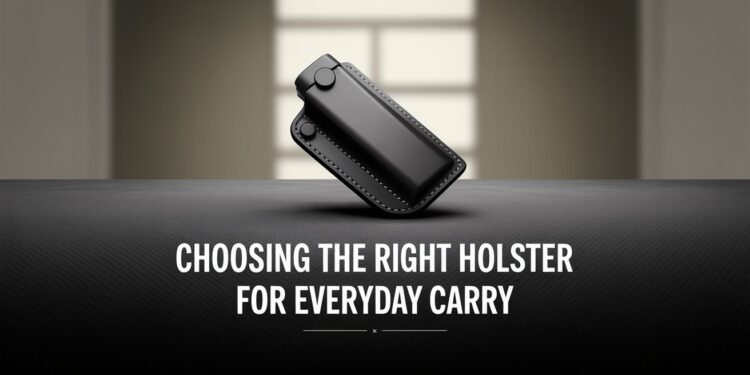Beyond securing your firearm, the right holster offers comfort, consistent concealment, and quick accessibility. Choosing a product tailored to your lifestyle and the specifics of your firearm is vital. Brands like Fobus have set industry standards, but understanding your needs and habits will ensure you make the best choice for daily carry.
Selecting the right holster is crucial for safe and effective firearm carry. Holsters affect comfort, fit, accessibility, and retention, ensuring responsible and confident carrying. For those considering top-rated options, Fobus holsters are a well-known choice praised for their innovative designs, secure retention, and reliable concealability.
Comfort and Fit
A perfect holster for daily carry should fit your firearm and body perfectly, offering a balance of durability and comfort. Materials like leather, Kydex, or nylon are ideal, with adjustable retention screws and cant for a natural fit.
Concealment
The point of concealed carry is discretion. Holster design, placement on the body, and ride height all factor into how well your firearm stays hidden. Whether you prefer appendix carry, inside-the-waistband (IWB), or pocket carry, the right holster minimizes “printing” (the visible outline of your firearm through clothing) and adjusts easily to your wardrobe. Holsters explicitly designed for concealed carry will mold to your firearm and body shape, making daily concealment more comfortable and less noticeable.
Accessibility and Draw Speed
Self-defense firearms require accessibility and draw speed. Holsters allow natural draw strokes and are adjustable for cant and ride height. Quick-release thumb breaks or passive retention mechanisms can reduce draw time. Consistent training builds speed and muscle memory for rapid response.
Material and Durability
A reliable holster is built to endure. Daily carry exposes holsters to sweat, movement, and environmental wear. High-quality leather offers timeless appeal and form-fitting comfort, while Kydex and injection-molded plastic excel in rigidity, waterproofing, and consistency of retention. Reputable brands typically back their holsters with warranties, addressing manufacturer defects or premature wear and tear. When selecting, investigate customer reviews and company reputation to provide in-depth holster comparisons and durability reviews that can help guide your purchase.
Retention
Retention refers to a holster’s ability to securely hold a firearm, thereby minimizing the risk of loss or unauthorized access to it. Standard features include adjustable screws, friction fit, and trigger guard locks. Selecting a holster with solid retention is crucial for safe concealed carry, especially in active or crowded environments. Up-to-date legal information can often be found on reputable sites, such as the US Concealed Carry Association’s Concealed Carry Reciprocity Map, ensuring your gear choices remain compliant and safe.
Training and Holster Type
Your holster should correspond to your training and familiarity with different carry methods. Each style—outside-the-waistband (OWB), IWB, shoulder, ankle, or pocket—has unique advantages and drawbacks. Before committing to a holster, assess your ability to draw efficiently and re-holster safely. If you are new to concealed carry or exploring a new holster type, working with a firearms instructor or joining local training sessions is beneficial to ensure your choice matches your skill level.
Do Read: Kathleen Nimmo Lynch – Boston Celtics Team Service Manager & the 2022 Controversy

















